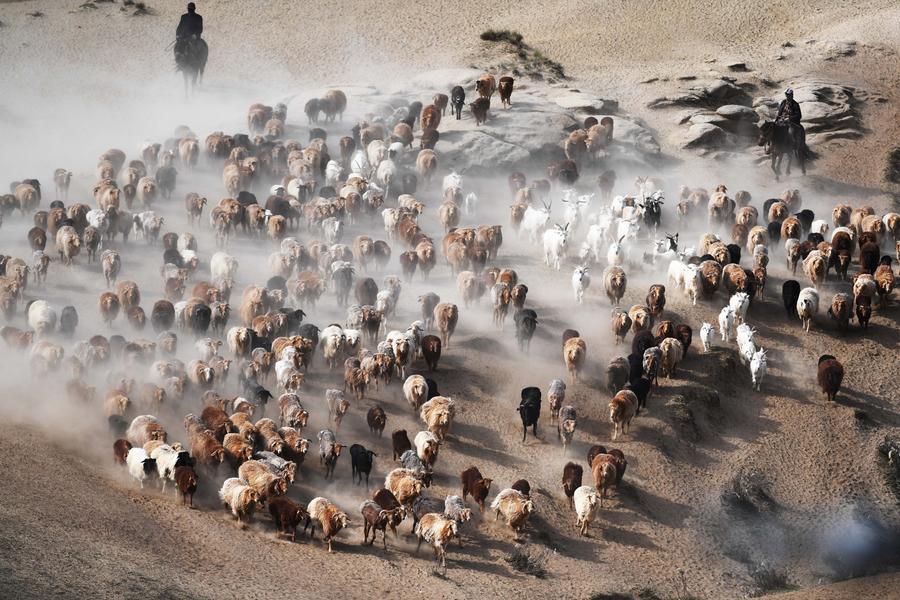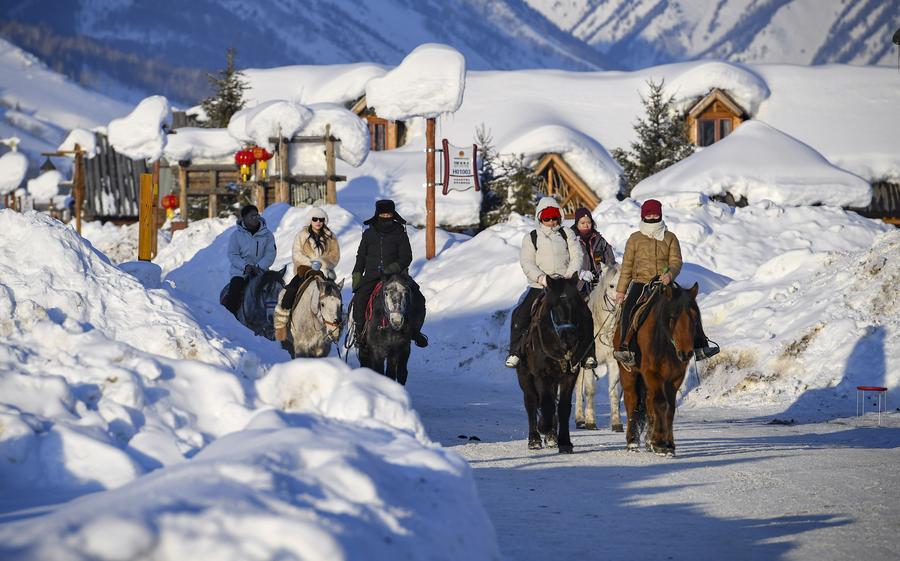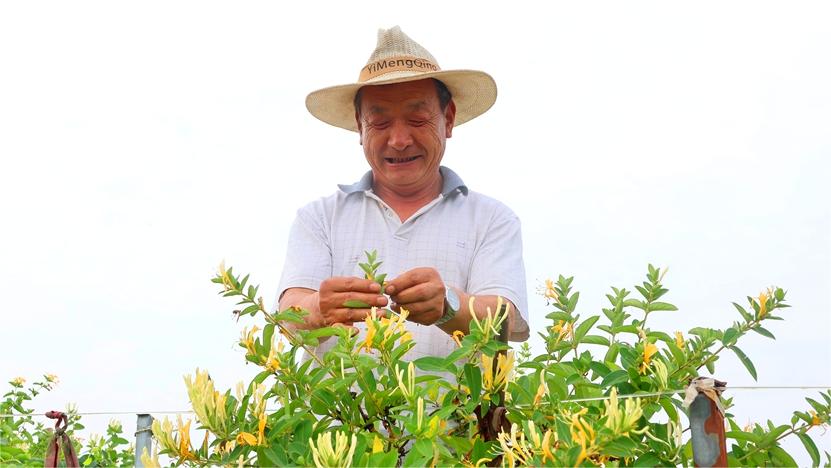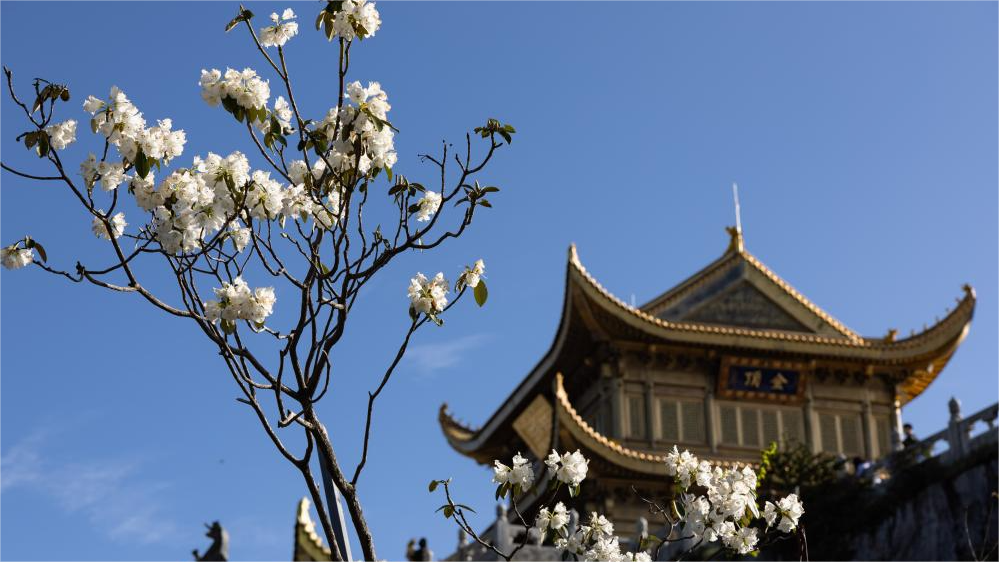Hit TV series puts Xinjiang's millennia-old nomadic culture under spotlight

Ethnic Kazak herdsmen move their livestock to summer pastures in Fuhai County of Altay, northwest China's Xinjiang Uygur Autonomous Region, June 5, 2021. (Xinhua/Sadat)
URUMQI, May 29 (Xinhua) -- For thousands of years, many herders in today's Altay Prefecture in northwest China's Xinjiang Uygur Autonomous Region have been following a nomadic life, leading their livestock on journeys to different pastures at certain times throughout the year.
Recently, this millennia-old tradition has been thrust back into the spotlight following the release of "To the Wonder," a TV series adapted from Li Juan's prose collection "My Altay." The show, which aired lately, became an instant hit. The spring migration in Altay has basically concluded, and the summer migration will begin in early June.
A month ago, 600 heads of livestock belonging to Adalbek Beldumulati, a Kazak herder from a village in Altay, were loaded onto multi-deck trucks and transported to a pasture over 200 kilometers away from the village.
After a five-hour drive, they arrived at the Sarbulak spring pasture in Altay's Fuhai County. "In the past, it would take at least a week to complete the migration. Now, we can leave in the morning and arrive in the afternoon," said Adalbek Beldumulati, who is in his 50s.
Sarbulak, meaning "yellow spring," is a place where melting ice and snow form rivers that flow through the mountains. At the foot of these mountains, lush green grasslands stretch out, dotted with herds of cattle and sheep.
The TV series has scored 8.8 out of 10 on China's popular rating platform Douban. The series portrays nomadic life during migration journeys, highlighting the collision of old and new ideas and the integration of traditional and modern ways of life, drawing significant attention to the nomadic culture in Altay.
Altay, one of the pastoral areas in Xinjiang, is home to vast grasslands stretching between the Altay Mountains and the Junggar Basin. Nomadic ethnic groups migrate in search of water and grass throughout the year, leading their livestock on long-distance journeys to different pastures based on the growth cycle of the grass. This unique nomadic culture has existed for thousands of years.
Even today, the herders in Altay maintain different pastures for each season. Every year, they migrate back and forth from south to north, and vice versa, covering distances ranging from a few dozen kilometers to more than 1,000 kilometers. In the spring of 2024, over 2.2 million livestock in Altay were part of this migration.
In the vertical mobile grazing practiced by the Kazak ethnic group, migration allows for the efficient use of forage resources. "The grazing style is adapted to the fragile alpine grassland natural ecosystem," said Chen Xiangjun, professor at the School of Ethnology and Sociology in South-Central Minzu University.

Tourists ride horses in Hemu Village in Altay Prefecture, northwest China's Xinjiang Uygur Autonomous Region, Feb. 5, 2024. (Xinhua/Ma Kai)
In recent years, local government has increased investment in infrastructure in the pastoral areas, transforming some traditional pastoral trails into highways to facilitate the transportation of herders. Over 100 posthouse facilities have also been established along the herders' migration routes, providing them with easier access to services such as accommodation, food and bathing, as well as supplies for their livestock.
Today, many herders use modern equipment, such as motorcycles and walkie-talkies, and the younger generation enjoys communicating with the outside world through the internet.
Bota, a "post-90s" herder in Altay, has an innate love for pastoral life. She often livestreams and creates videos while grazing, capturing everything from making felt blankets to preparing food with modern kitchenware and electricity. Through her videos, netizens can experience the scenery of the Altay pastures and see how modern life preserves traditions while embracing change.
The nomadic culture has also become a tourism attraction in Altay, drawing visitors and shutterbugs alike.
An important stopover for herders during their migration journeys, Sarbulak town in Fuhai has been hosting a migration-themed tourism festival for years. Traditional activities like horse racing and wool knitting offer tourists from home and abroad a chance to immerse themselves in the nomadic culture.
"An increasing number of tourists have been coming to the pasture to experience the slow-paced life and the unique folk culture," said Waspan Malek, owner of a homestay in Altay's Burqin County. He added that when he first started the business, there were only two to three guest rooms, but with Altay's increasing popularity, he had to expand the homestay to encompass more than 50 guest rooms.
Jilin New Village, a filming location of the series "To the Wonder," located in Altay's Habahe County, welcomes nearly 5,000 tourists daily. Among them is An Meimei, 21, who hails from central China's Hubei Province.
"I was drawn by the breathtaking scenery portrayed in the TV series. While I had previously seen images of the migration, witnessing the herders' journey firsthand allowed me to truly grasp the essence of their nomadic lifestyle. It's an epic tale of harmony between people and animals," An said.
According to the bureau of culture, sports, radio, television and tourism of Altay City, Altay Prefecture recorded over 1.05 million tourist visits from May 13 to 19, up 70.07 percent year on year.
Photos
Related Stories
- Xinjiang art show captivates audience in Kuwait
- Sports enliven life in Xinjiang, kindling dreams
- Xinjiang maps plan to welcome more domestic and intl travelers
- BRI to bring China's Xinjiang, Pakistan together for shared development, prosperity -- experts
- TIR assembly center to facilitate cross-border trade established in China's Xinjiang
Copyright © 2024 People's Daily Online. All Rights Reserved.









